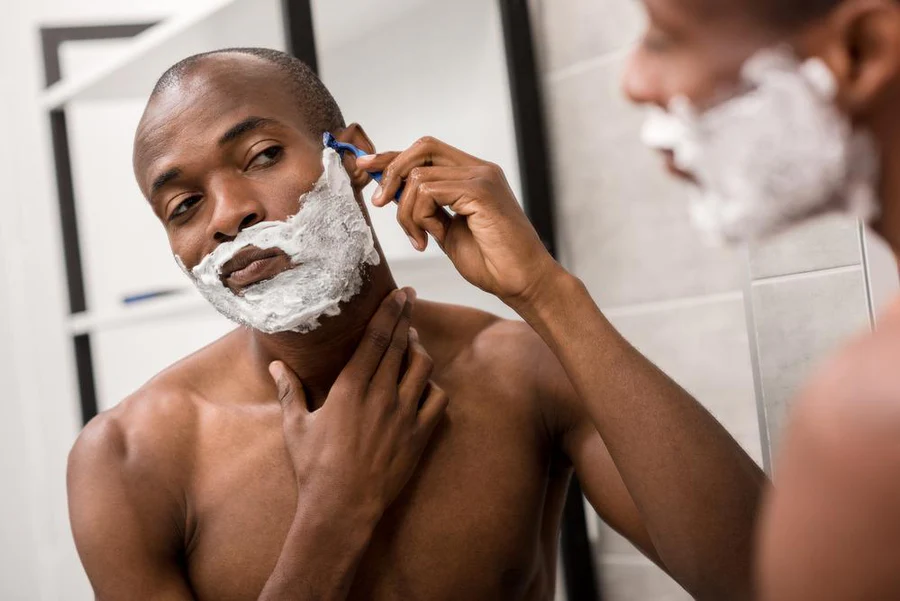
If there’s one thing a good facial is meant to do, it’s to leave your face refreshed and rejuvenated. However, this skincare treatment can leave your face raw and red in some rare instances, which could be a huge red flag.
So, if you aren’t sure if your skin is okay post-facial, here are some red flags to look out for.
✅ Red or Pink skin
Depending on your skin type, a facial could leave your face red or pink for a couple of hours/days after. And you’re on the safe side if there are no other side effects like burning or stinging. This just means your skin’s sensitive and needs a few days to settle.
As there are different types of facials with different outcomes, some are targeted at stimulating the best results while others are pretty much relaxing. So, depending on how much stimulation is done, the exfoliating mask, and extraction tool used, your face might likely stay red for some time after.
To protect your face, use non-active mild products for the first few days until the redness subsides.
Extreme Redness or Burning
Feeling a burning sensation or stinging post-facial is a sign that something’s gone wrong. It is a likely sign that your skin is reacting to an ingredient used on your skin, over-exfoliation, or a chemical peel that wasn’t properly neutralised.
However, you might feel burning and stinging during a chemical peel, but this should end once the peel is neutralized and removed. Anything after is a huge red flag.
If there’s a feeling of discomfort, be sure to contact our aesthetician for a follow-up treatment to speed up recovery.
✅ A Cool-down Period
Once your facial is completed, applying cooling products to calm irritations caused by extractions is necessary. So while your skin needs a 20-minute warm-up to begin extractions (steaming), it also needs some time to cool off.
You shouldn’t walk out of the room with welts, bleeding, or blotches. And since facials stir up bacteria, leaving them behind could also cause breakouts, worsening the skin’s condition.
Anything Over
Over-exfoliation & overaggressive extractions are huge red flags with a warning bell. It means that facial isn’t right for you, and you should dust off your shoes and leave.
Over exfoliating the skin could cause temporary/chronic inflammation of skin cells and hair follicles, making them susceptible to bacteria.
How do you know when these things are overdone.’ Burning sensations= HUGE RED FLAG.
While you might feel a slight tingling or stinging, anything extra should have you asking questions.
To prevent this, your aesthetician should prep properly and not just with steam but with exfoliants, pore-opening oils, and a face massage to lure out rather than force out the contents of the pores.
✅ A Little Bleeding
Yes, bleeding a little is very normal during facials, especially when extracting stubborn clogs or pimples. Not everyone bleeds, but if you do see little bits of red stains, it’s primarily due to your skin type and the type of extraction being done.
Bleeding After
NO! IMMEDIATELY NO!
If you have to walk out of your facial treatment with blood on your face, you should walk back in asking for your money back.
A great aesthetician will take time to cool your skin down after extraction to stop all bleeding. If there’s continuous bleeding, you should return to the office for care and tips on how to stop it. And make sure to contact your dermatologist, something deeper might be at play.
✅ A Little Breakout
Depending on your skin type and the extraction process, you might notice some redness, breakouts and your skin will need a few more days to heal completely.
Most times, this is a clear sign that all impurities were pulled from deep within and your skin only needs to heal.
Planning A Full Day Out Post-Facial
Please don’t. If you have a big event a few days away, maybe keep your facials until after.
FINALLY, trust your gut; if something doesn’t feel right, chances are it probably isn’t, and you should bring that up to your aesthetician. Also, remember to consult your dermatologist before booking harsher treatments like a chemical peel.













